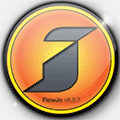
Subsequent electrical events are collected and analyzed on a computer that assigns a fluorescence intensity value to each signal.
#TREESTAR FLOWJO SERIES#
In a flow cytometer, cells in suspension are excited by a laser and the fluorescence emission from each cell is collected by a series of photomultiplier tubes. In FCM, intact cells and their constituent components are tagged with fluorescently conjugated antibodies and/or stained with fluorescent reagents and then analyzed individually.
#TREESTAR FLOWJO SOFTWARE#
The recently developed FCM data standards are now being incorporated into third party software tools and data repositories, which will ultimately facilitate understanding and data reuse. Reporting standards and open file formats are essential for scientific collaboration and independent validation. Here, we introduce these recent standards and provide the very first example of how they can be used to report FCM data including analysis and results in a standardized, computationally exchangeable form. Additionally, the Archival Cytometry Standard bundles data with all the other components describing experiments. The Classification Results File Format was developed to accommodate results of the gating process, mostly within the context of automated clustering. Gating-ML was then introduced to capture gating descriptions - an essential part of FCM data analysis describing the selection of cell populations of interest. MIFlowCyt is now being recommended to authors by publishers as part of manuscript submission, and manuscripts are being checked by reviewers and editors for compliance. Efforts started with the Minimum Information about a Flow Cytometry Experiment, a minimal data reporting standard of details necessary to include when publishing FCM experiments to facilitate third party understanding. The Data Standards Task Force (DSTF) of the International Society for the Advancement of Cytometry (ISAC) has developed several data standards to complement the raw data encoded in FCS files.
#TREESTAR FLOWJO FULL#
However, FCS does not capture the full scope of flow cytometry (FCM)-related data and metadata, and data standards have recently been developed to address this shortcoming. The Flow Cytometry Standard (FCS) was developed in 1984 for storing flow data and it is supported by all instrument and third party software vendors. Improved interactions with BD® Research Cloud: Save and load options throughout the software now include the BD ® Research Cloud as an option.įor more about features and a list of known issues, see the exhaustive release notes.Flow cytometry is a widely used analytical technique for examining microscopic particles, such as cells.



 0 kommentar(er)
0 kommentar(er)
